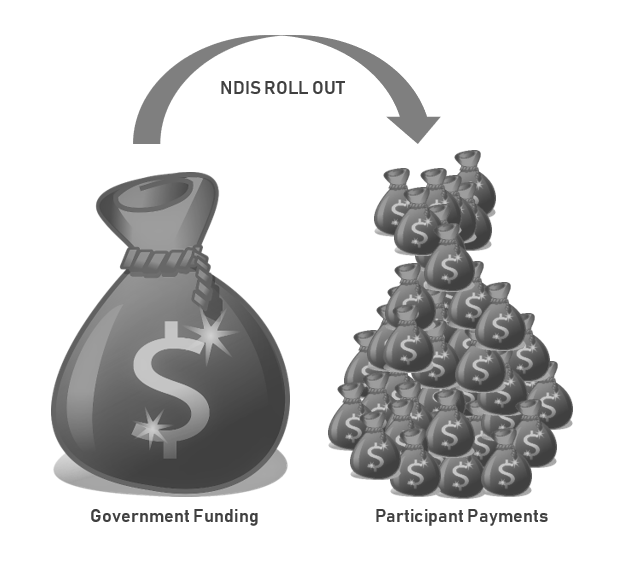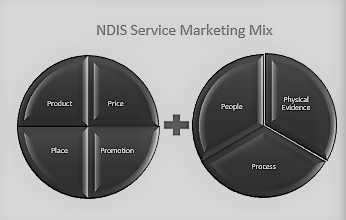It goes without saying that the NDIS roll out has caused a massive disruption to the operational management and financial growth potential of disability service providers within Australia. What hasn’t become as obvious within the sector, is the impact that the transition to a participant driven income generation model will have on the demands for branding and marketing for NFP service providers within the disability sector.
Goodbye lump sum funding, hello fees for service
Imagine this. For as long as you can remember your employer has been banking your salary into your account every fortnight. From the time you signed the contract to the time that you part company, hours worked equal automated hours paid giving you a fixed, safe and secure income.
What if suddenly your employer decides to change the system. Rather than a fortnightly payment, your income will be paid across a number of smaller pre-determined measurable outcomes. For example, every time you successfully complete a set of tasks, you submit an invoice and payment is made. How will this change impact your financial management and income security.
While for many this seems like an absurd scenario, for disability service providers, this exact shift in income generation has been shaking the disability sector to its core since the roll out of the NDIS.
Welcome to a participant driven income generation model
For many NFP organisations within the disability sector, secured government funding has represented the majority of income revenue for a number of decades leaving the management team with the responsibility of a subset of smaller, goal related fundraising objectives, usually achieved through the blend of traditional offline events and fundraising methods.
With the shift of revenue moving away from a lump sum secured funding contract to individual participant payment for services, all NDIS service providers are now facing a financial future that is unsecured and somewhat volatile.
For many NFP organisations within the disability sector, secured government funding has represented the majority of income revenue for a number of decades leaving the management team with the responsibility of a subset of smaller, goal related fundraising objectives, usually achieved through the blend of traditional offline events and fundraising methods.
With the shift of revenue moving away from a lump sum secured funding contract to individual participant payment for services, all NDIS service providers are now facing a financial future that is unsecured and somewhat volatile.
NDIS & Service Marketing
As every day consumers of physical products, we are all familiar with the concept and tactics used in what we have come to recognise as the 4 P’s of Product Marketing: Product-Price-Promotion-Place.
While service marketing sounds similar there are some fundamental differences that create additional complexities when it comes to presenting their unique propositions to the target markets.
Services are intangible, perishable experiences that exist only in real time. They are inherently attached to their provider and offer personal outcomes that differ from each user and can rarely be repeated the same way twice.
Consequently, in addition to the 4 Marketing P’s, services are heavily reliant of people, physical evidence and process to complete the actions required.
For this reason, the service marketing mix that will need to be adopted by NDIS providers will need to incorporate an additional 3 elements to the product marketing quadrant to ensure optimum service delivery and sustainable business growth.
To succeed within a very competitive environment, each NDIS providers will need the specialised supported of an evolving marketing plan that takes into account all of the 7 marketing elements to output quality services while delivering the organisations growth targets.
By adopting a product market, customer centric approach, Not for Profit NDIS service providers have no choice but to also adopt the same marketing framework required by full profit organisations to enable the specialised skills, resources and budget support required to respond to the growing need for service marketing.
A well formulated Marketing Plan is an essential ingredient for building the brand awareness needed to not only continue to support and engage with existing participants but to communicate with and engage with potential new ones.
Effective NDIS Marketing
While marketing may not be considered rocket science, understanding the complexities of human behaviour coupled with competitive market forces is a science that will take the specialised skills and insights of an experienced and qualified marketing person to negotiate.
Regardless of the size of your NFP organisation, having a senior marketing resource within your executive team is an essential ingredient to successfully transitioning to the NDIS.
At creative excellence we believe that success for NPF service providers within the disability sector will follow a focused and integrated marketing approach that adopts a strategic service marketing model aligned to their participants needs and expectations.
If you’d like to discuss this or any other marketing/business development needs that you have then please take this opportunity to contact creative excellence today.
Author’s insights:
As an Integrated Marketing Strategist with over 20 years’ experience including NPF marketing, roslyn whately knows what it takes to achieve a successful transition to the NDIS whilst building the foundations for sustainable growth.


